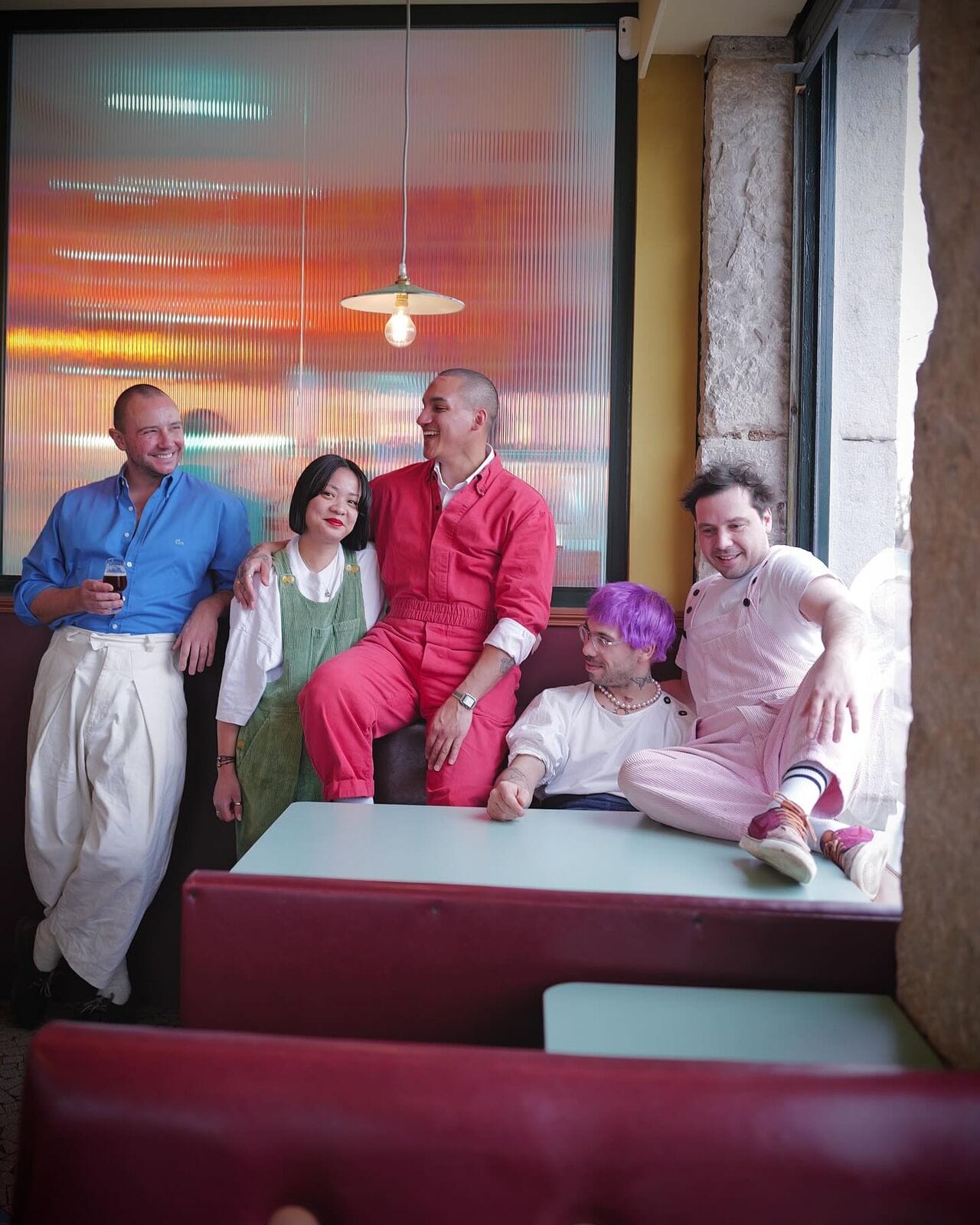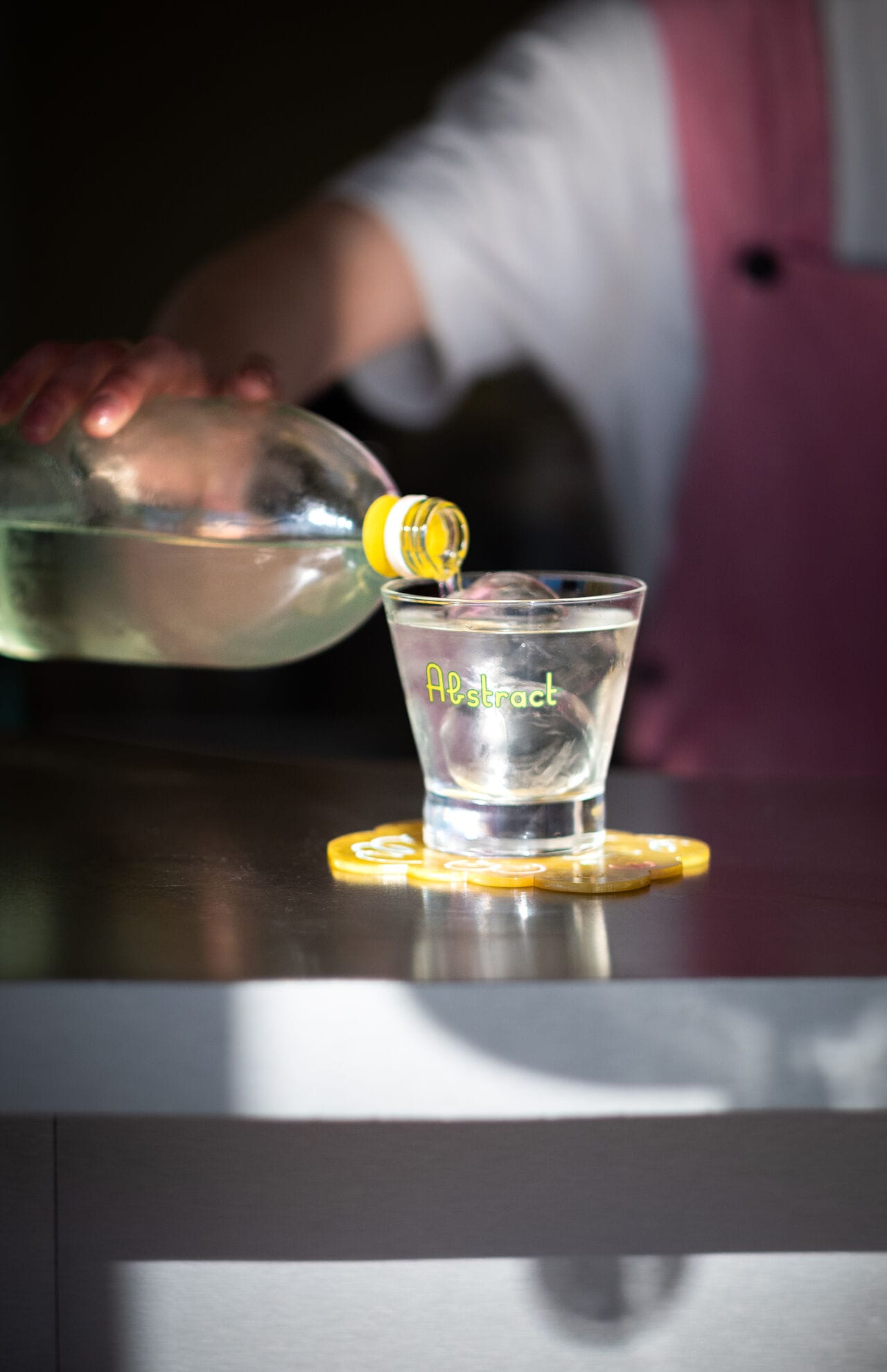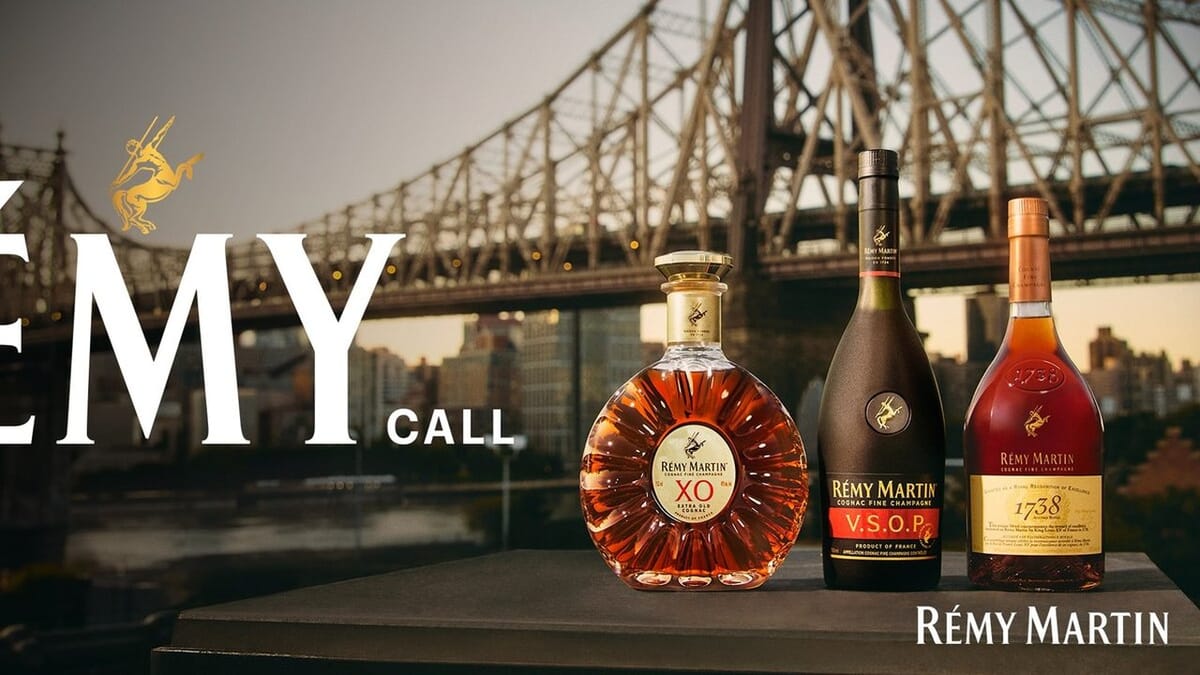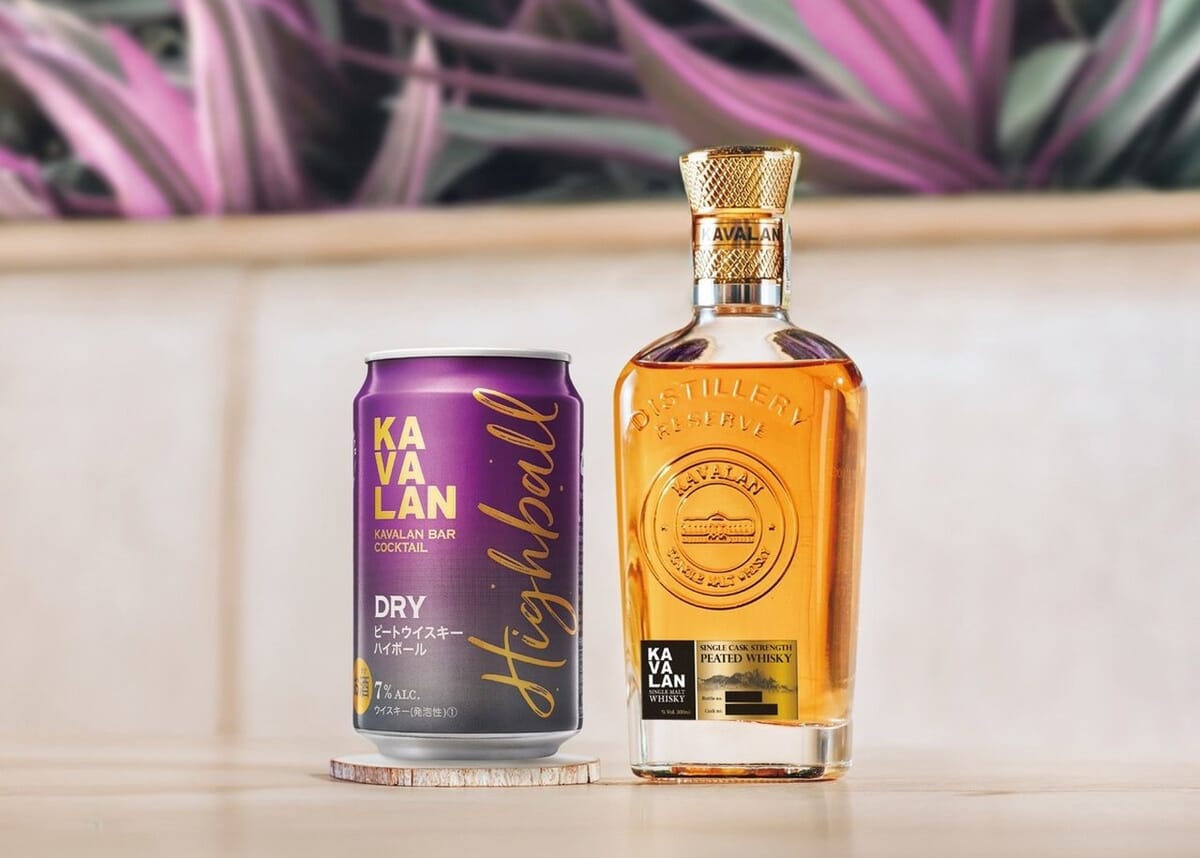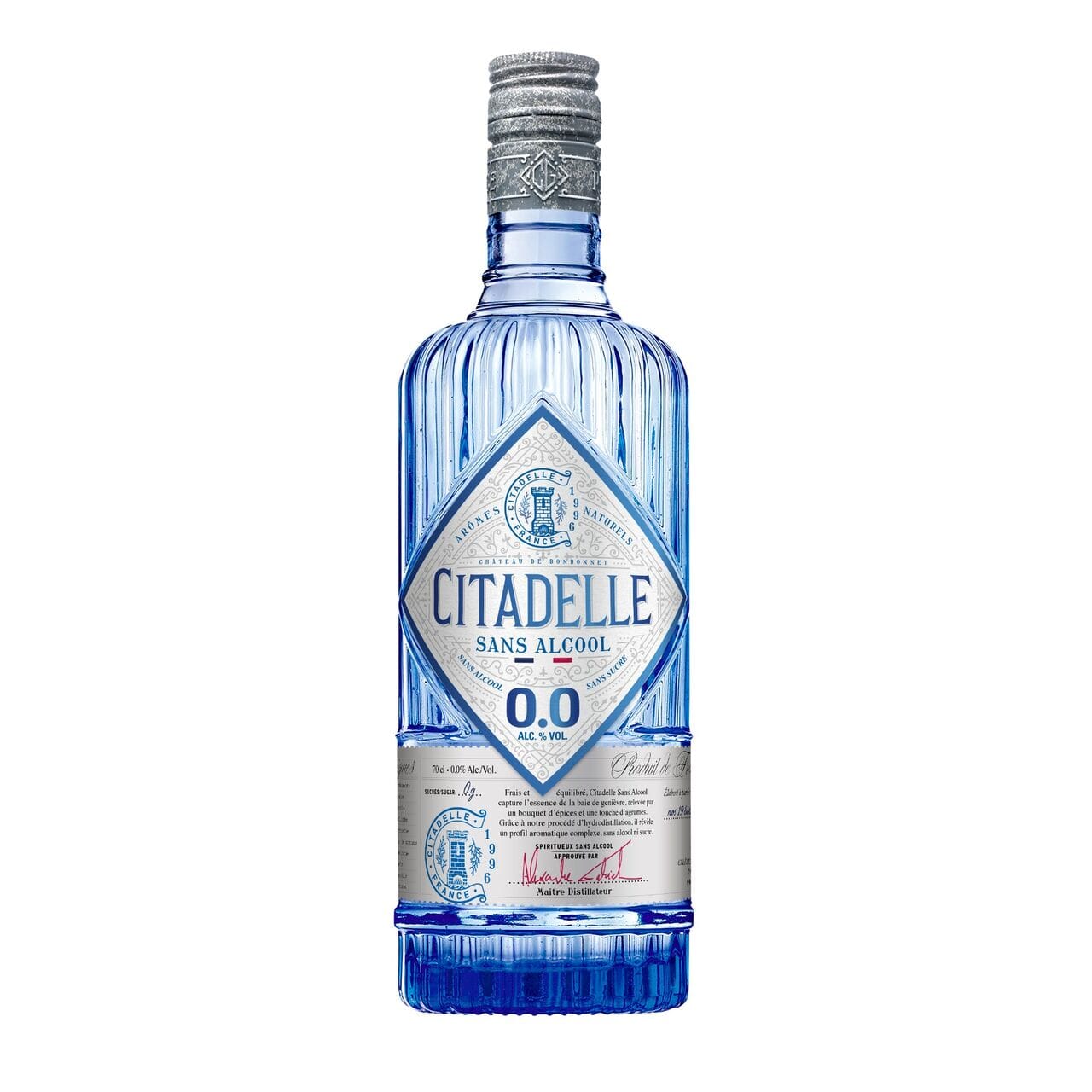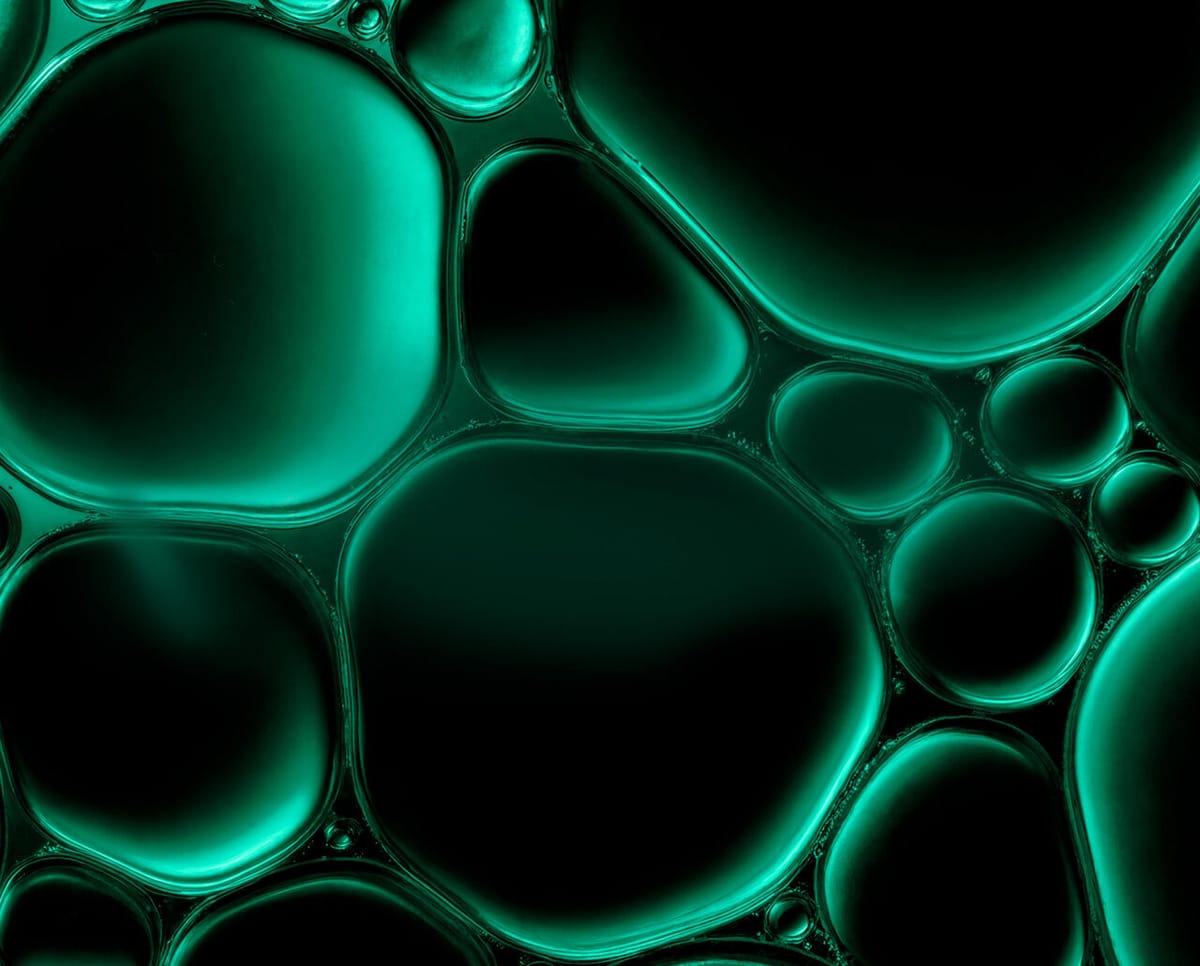Nicolas Minisini: "Abstract gives us incredible freedom"
In Lyon, Abstract is both a lab that makes Monochromes (single-ingredient, vacuum-distilled spirits) and a bar that reimagines classic bistro drinks with those spirits. Co-founder Nicolas Minisini shares how the venture began and where it’s headed.
BarNews: What is the concept behind Abstract?
Nicolas Minisini: Abstract might be the only bar whose entire menu relies exclusively on spirits we distill ourselves. We use only what we produce. The goal from day one was to change who we talked to—ditch the brand reps and speak directly with producers. That’s true for all our Monochromes—or at least for the ones we sell online. Our raspberries are picked just an hour outside Lyon; the lemons—of exceptional quality—come from Saint-Laurent-du-Var; the strawberries are grown nearby as well; the coffee is roasted just down the street; and the butter comes from Maison Bordier.
Abstract Bistrot is open three days a week. That schedule gives Faustine Simorre and me time to work in the lab. On the food side, we’re finishing a new menu built around our distillates—an angle we hadn’t really pushed before. For example, we’ll feature a dish with raspberry vinegar made from the leftovers of our Monochrome production.

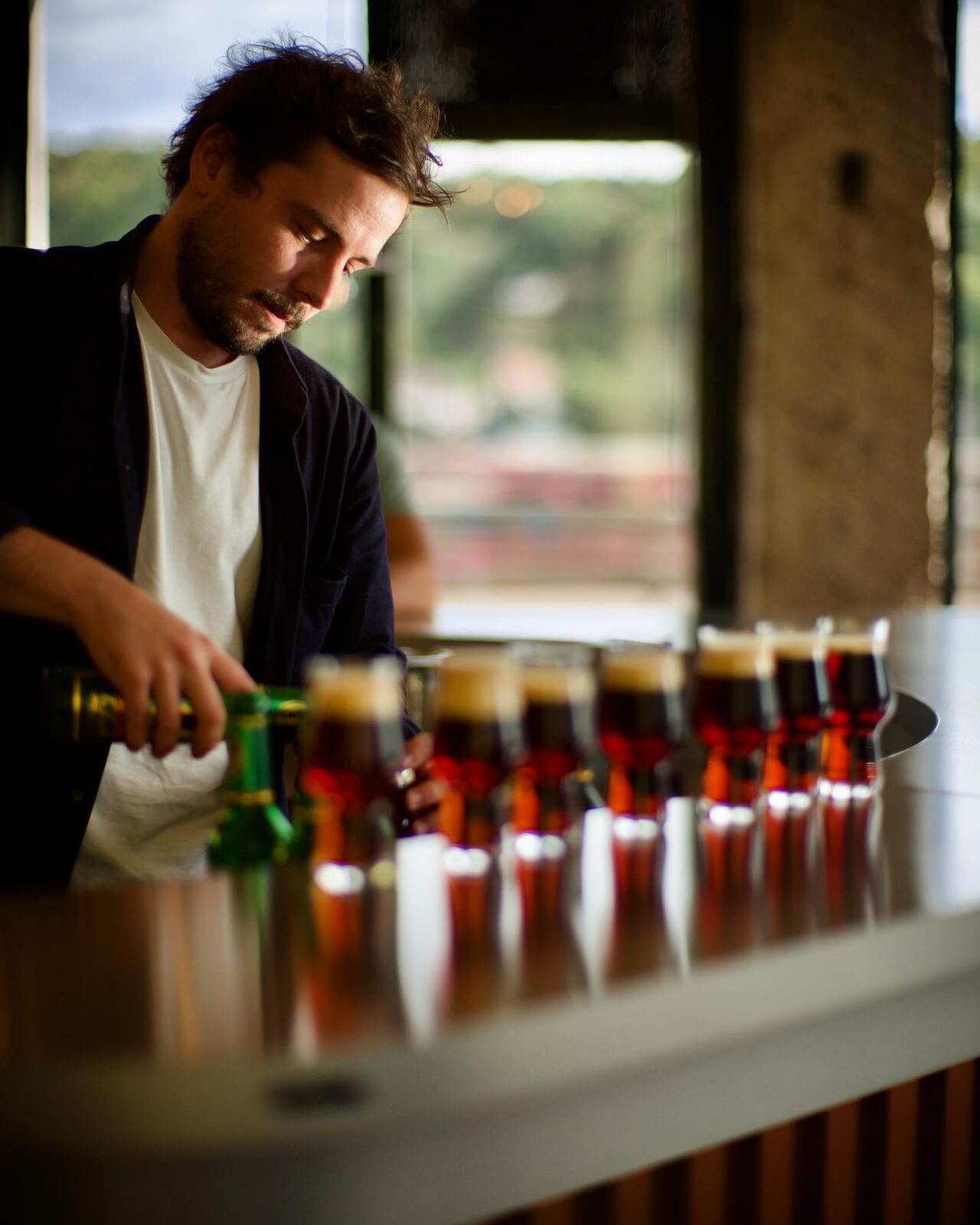
Faustine Simorre (📷 Ewen Le-Bescont) & Nicolas Minisini – Abstract, Lyon
The venue has a strong identity. Did you change the original setting a lot?
We redid everything from top to bottom except the façade. The storefront stayed as-is because we fell in love with it. We didn’t want to erase its history—just start a new chapter. That’s why the space has a nostalgic ’50s/’60s vibe.
When we first saw this corner building with its big windows, it reminded us of a famous Edward Hopper painting, so we used that as a design reference. But we also wanted to avoid the obvious—there are bars inspired by that painting all over the place. Because the bar is called Abstract and nods to abstract art, we looked for what we dubbed the “rhinoceros,” in honor of Ionesco: a familiar setting disrupted by something that clearly doesn’t belong. We searched for that disruptive element throughout the design process, and dichroic glass won out. It constantly changes color, drawing the eye to the back of the bar. The space evolves throughout the day, and when the sun sets in summer, it reflects off the window, turning everything bright orange.
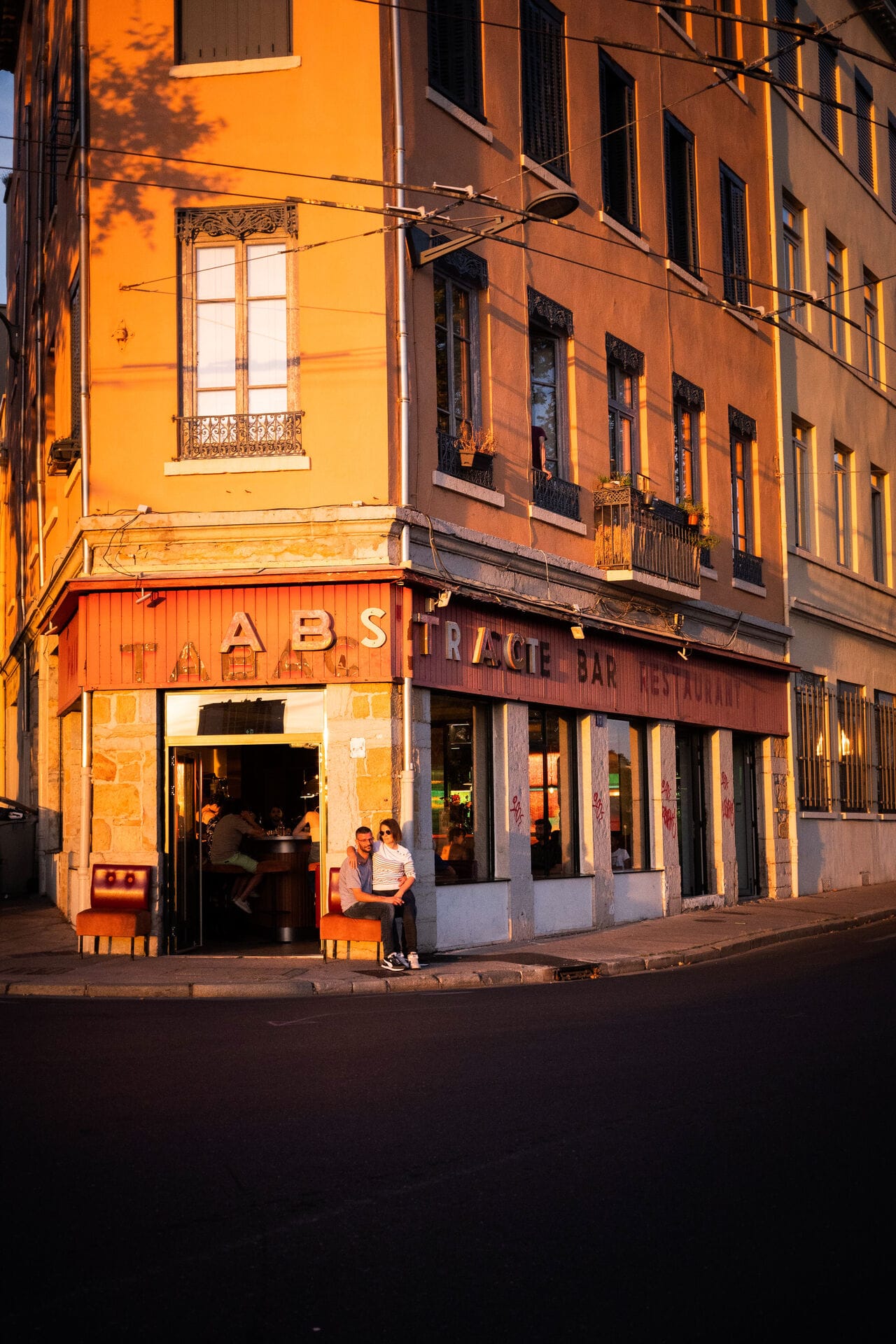
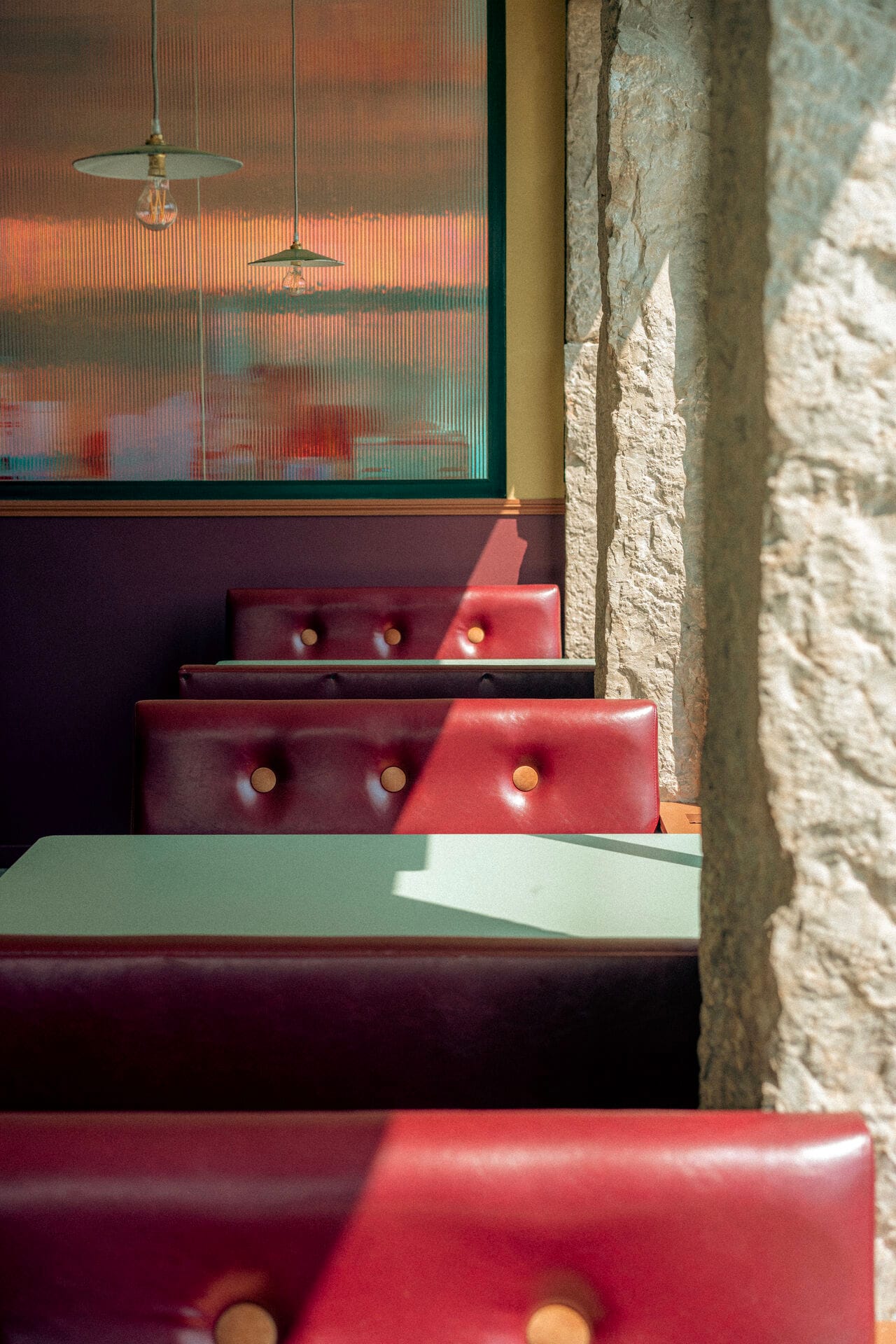
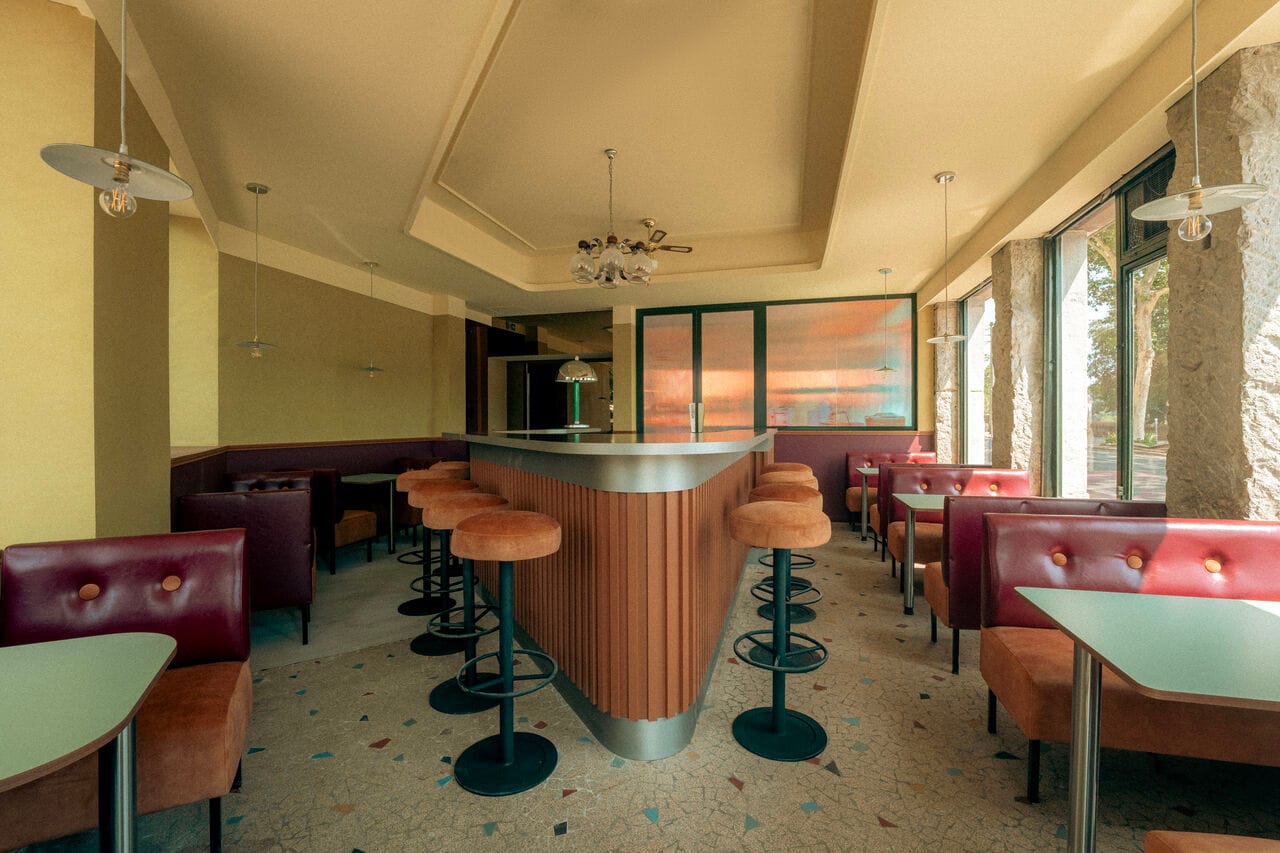
Abstract, Lyon
The lab isn’t hidden; it’s part of the overall aesthetic, right?
Exactly, though we highlight the contrast between the two spaces. The lab is far more brutalist, all stainless steel in shades of gray. It’s about 320 square feet—big for a bar, tiny for a distillery—so guest bartenders see it as a dream workspace.
All our Monochromes are made here. Each bottle is hand-painted, and the labels are punched out on an old ’80s Dymo label-maker. Pure craft.
The lab has three rotavaps: one large, two small. The small ones handle all the batches for the bistrot—test runs and limited releases. Once a recipe’s locked in, we move to the big machine for larger volumes and external sales.
The Buchi team that set it up told us we’re the only bar in Europe with the large model.
Abstract Lab gives us incredible freedom because we have zero contracts with spirit brands. We can do whatever we like. For us, mastering everything from raw product to glass was essential.
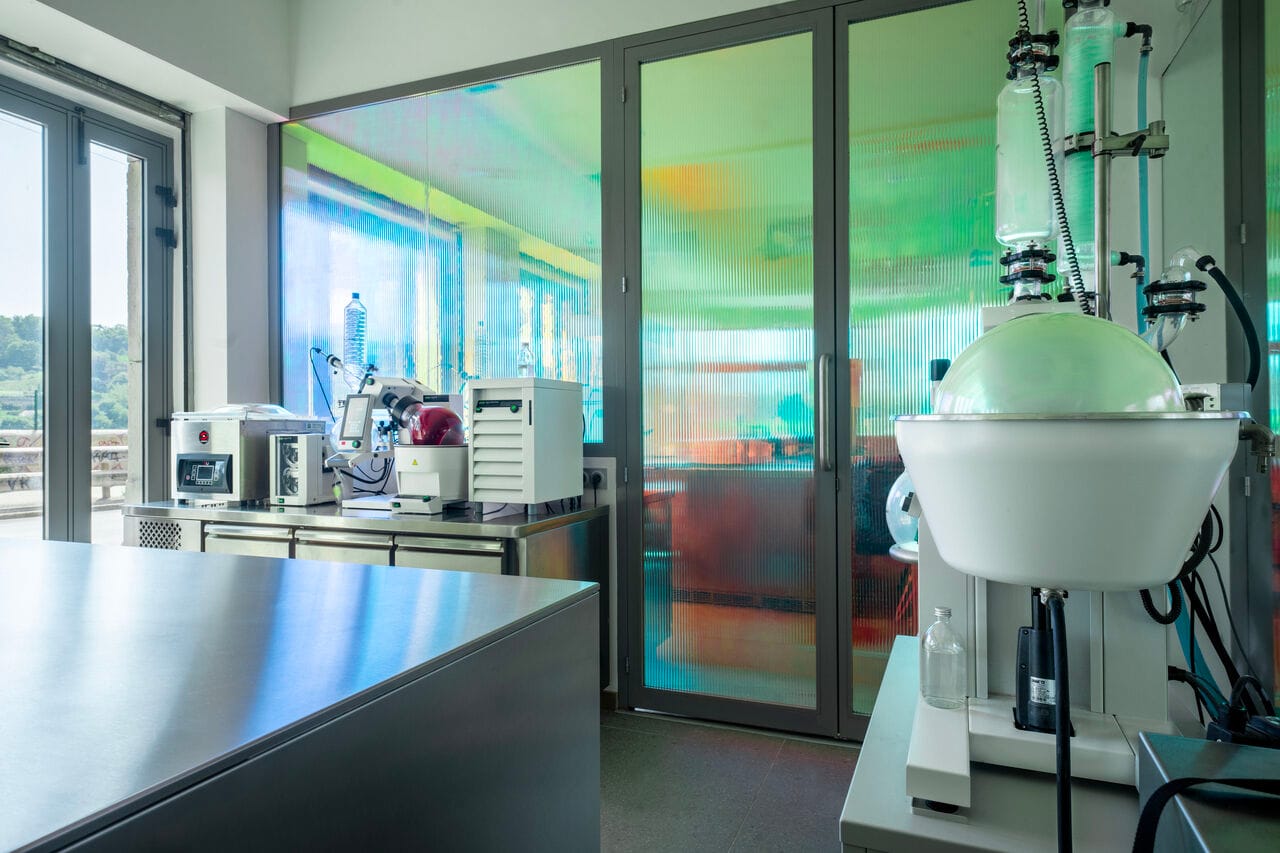
You also produce Monochromes here for other bars?
Yes. Bar Nouveau is adding a cocktail based on one of our Monochromes. At Shapes (ed. note: Un Bar avec des Formes pour Nom) in Bordeaux, their signature Pastel—also poured in London—features the Raspberry Monochrome we distill here.
So production is gradually ramping up, but each bar keeps its own identity and still uses classic spirits; the Monochrome just meets a specific need.
And the Paris outpost of Abstract Bistrot is starting to come together. (ed. note: Jigger Daily will be watching!)
Did the Monochrome idea come from wanting unusual distillates or self-sufficiency?
Abstract began with the lab concept. Four or five years ago, Rémy Savage and I spoke on the phone. I wanted to start a distillery; he had the Abstract project and the Monochrome vision was emerging.
The goal was to return to a kind of essentialism. Spirits have become so complex over time that non-specialists struggle to understand them. We thought: what if we forgot everything and went back to the very core of flavor—the ingredient?
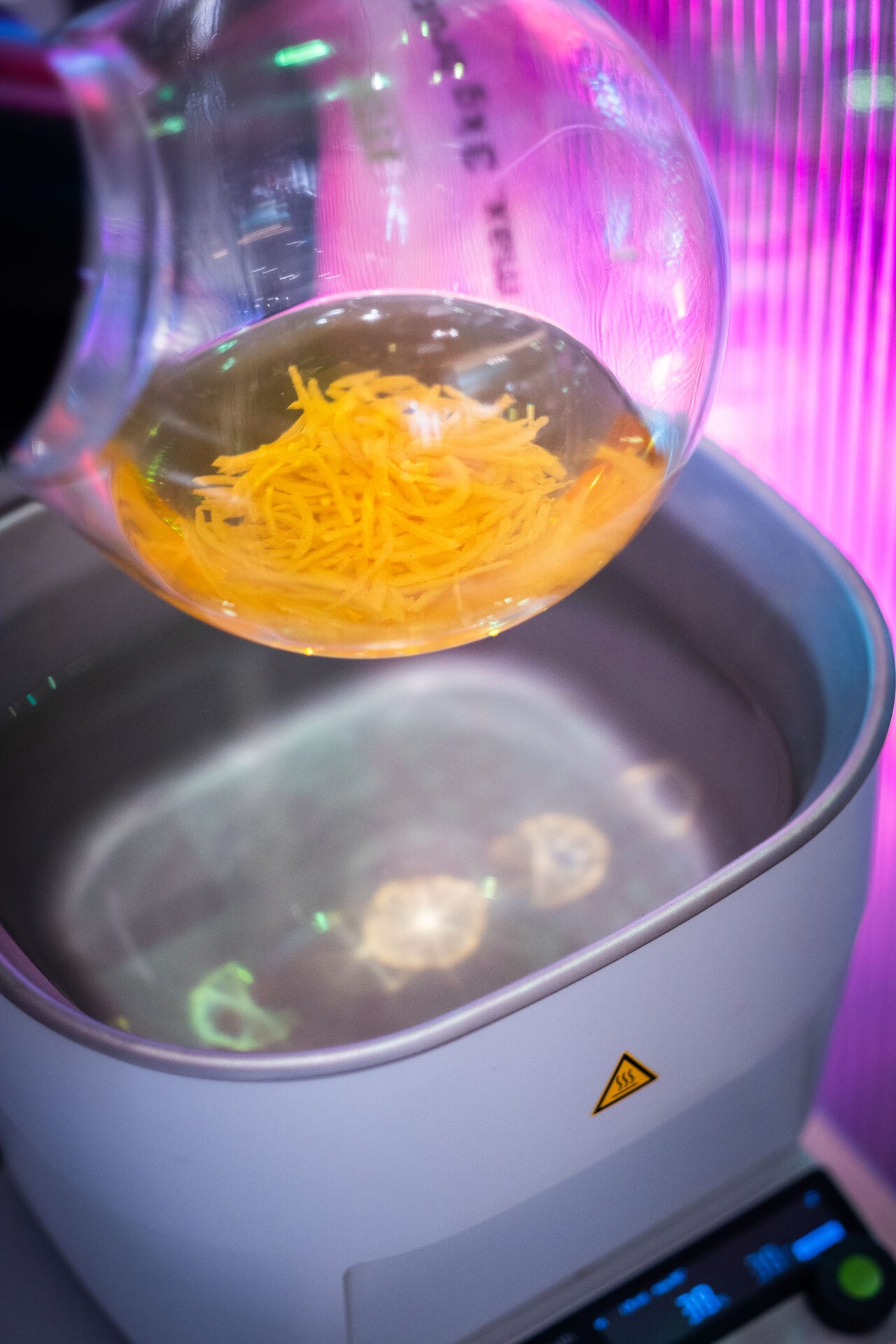
How many Monochromes are there right now?
Eleven in total. We use eight of them, four of which are sold on our site, with three more coming soon. The bell-pepper version is already done—though only in a small run for now. There’s also a Monochrome Coffee. And we’re even branching out with a coffee liqueur built on a Coffee Monochrome.
The team doesn’t set limits; we’re always testing because people bring us ingredients to try. When we have time, we examine them scientifically to find the ideal balance, and the result becomes a Monochrome for Abstract Bistrot, for retail, or both.
Monochromes are partly our answer to the current avalanche of flavored gins—sometimes of dubious quality: “Stop buying flavored gins when you can get the ingredient itself. If you love lemon, use a lemon distillate; it works just as well!” It’s nothing but lemon, alcohol, and a dedicated process to extract top aromas. Suddenly the message is crystal-clear.
With Raspberry, we realized the drink had to be straightforward for everyday drinkers, because these products require some education. That led us to a simple Raspberry Tonic. We’re really happy with how it turned out. We’re not here to weave complicated stories—though it can exist—but for people to taste and immediately recognize the ingredient, with a long finish.
Vacuum distillation softens alcohol’s harsh bite. And since we’re macerating, not fermenting, you don’t get that boozy hit. On the first sip, the fruit hits you right away. Same with lemon. Pure lemon spirits don’t exist; it’s usually limoncello or sweet products. Our Lemon Monochrome is fully organic—the fruit comes from a certified grower in Saint-Laurent-du-Var. The base is an organic grape-marc alcohol, 96°, from a co-op in the Southwest that recovers leftover grapes.
Fun fact: if you order every cocktail on the Abstract Bistrot menu, you’re always drinking the same base spirit!
We’re not saying the Old World should disappear and we’re the future. Our approach is specific because it serves our products: the Monochromes. And they need the low-pressure environment of a rotovap.
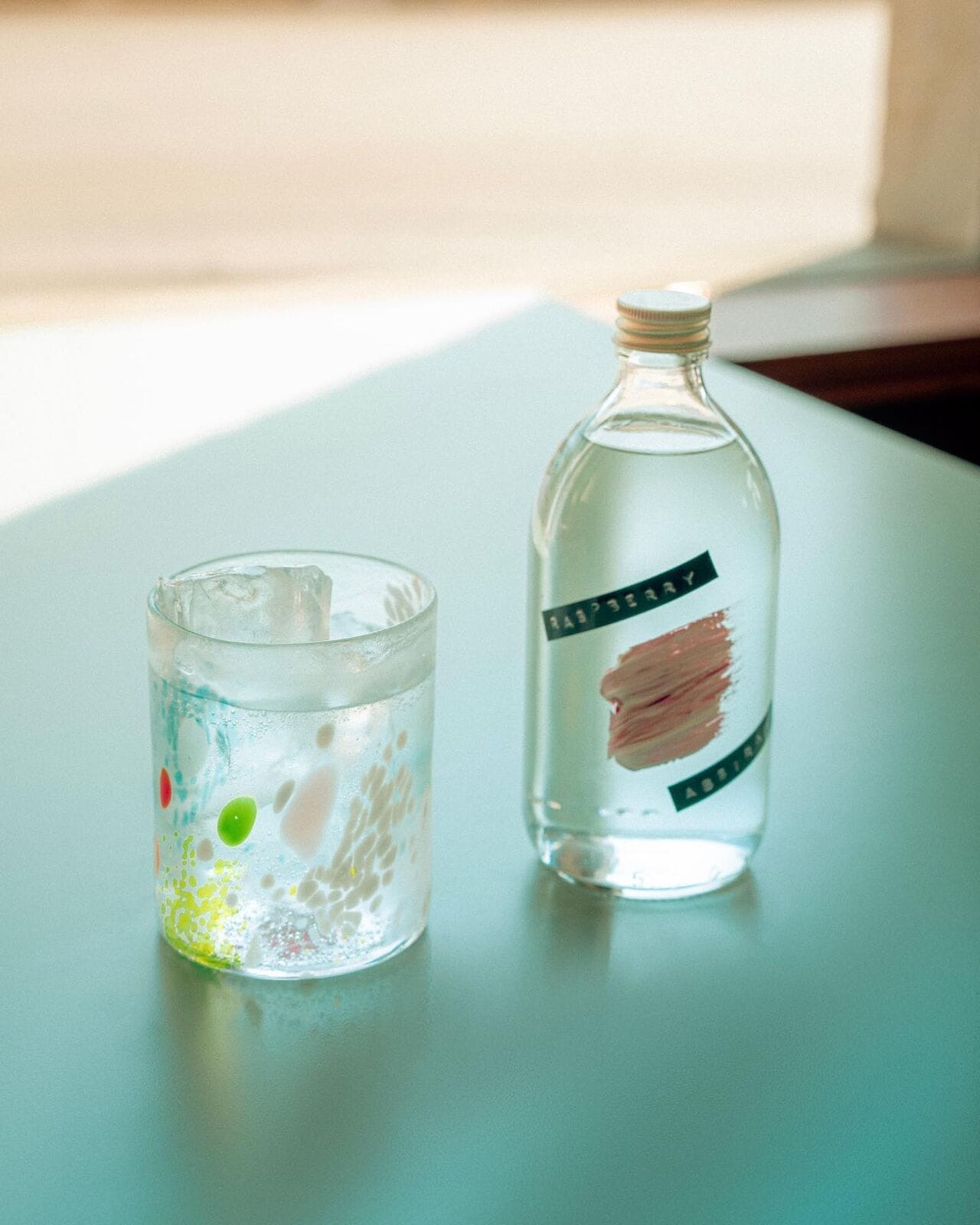
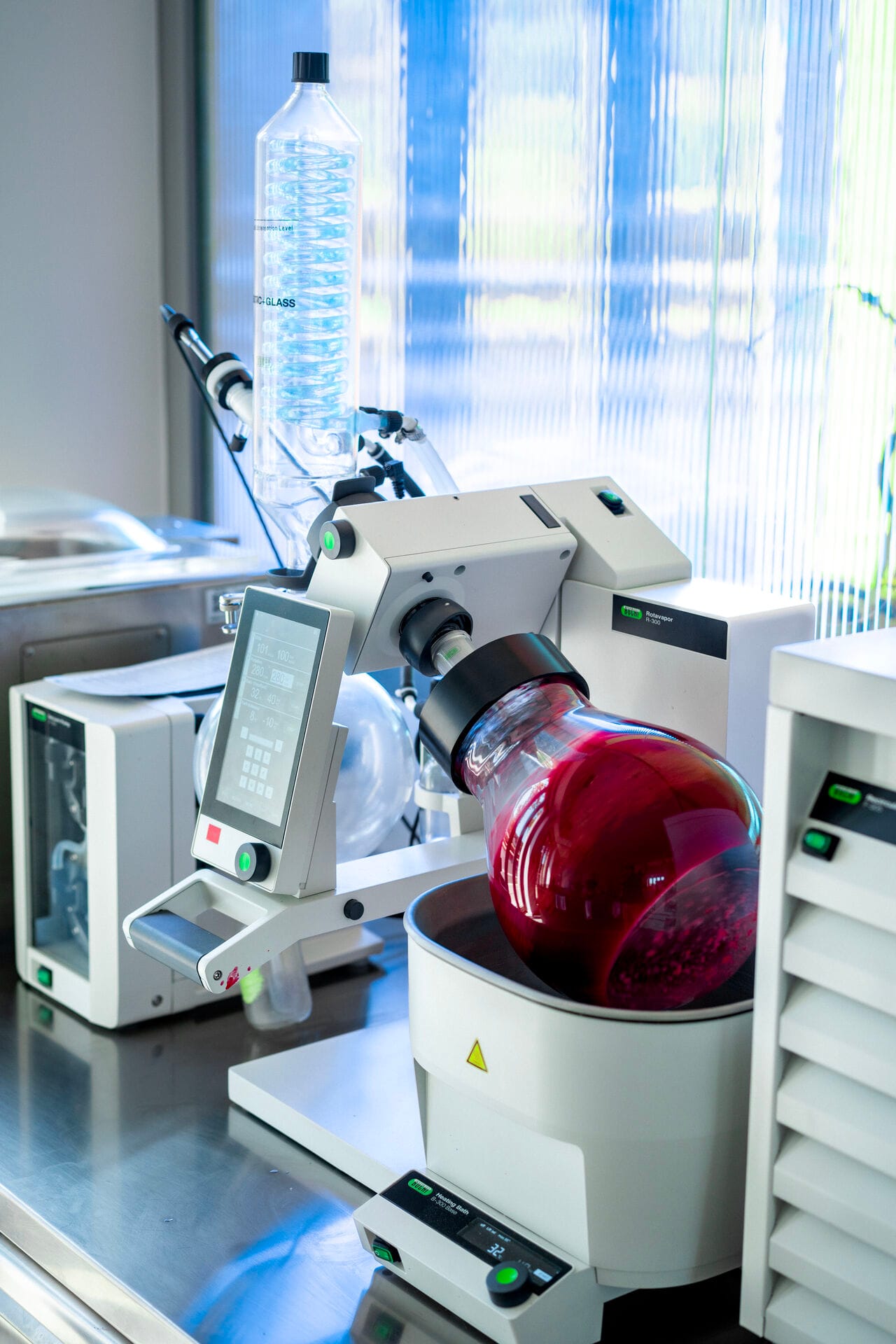
Raspberry Tonic – Abstract, Lyon
So the offer is versatile: innovative for pros yet clear for the public.
Exactly. We provide a solution for venues that can’t afford a bartender but still want something original: Raspberry Tonic works great. Strawberry Lemonade too. Lemon pairs with lemonade or tonic. These Monochromes fit perfectly with a simple mixer.
Level two of our drink plan is for home bartenders who want to impress their friends with more creative recipes. We offer recipes that are a bit more technical but still doable at home. Finally, we open creative doors for seasoned bartenders looking to push boundaries—even into the unusual. We made a Palo Santo distillate that proved fascinating.
So far, we’ve focused on citrus, fruit, and vegetables, but we could do limited runs of botanicals, wood essences, or mushrooms. There’s even a tailor-made Monochrome service for venues with specific needs.
All this echoes a line Rémy and I kept repeating early on: if we compare ourselves to art, we’re paint suppliers. We create colors—like Pantone—so others can play.
Are some ingredients harder to distill than others?
Raspberry was our first product, and it was an easy one. Lemon isn’t tricky to distill, but stabilizing the final product is: during reduction it esterifies and turns white. You can’t sell a spirit that looks like that, so we worked hard to fix it. The toughest, though, was butter—aromatically delicate, and physically it’s hard to marry alcohol and fat. It took ages to find a consistent process. The result is unique: Flavor-wise, it’s pure croissant—thanks to a hint of Maillard browning. We serve the Monochrome Butter as a Martini. It’s totally different from what you’ll find in more traditional bars! That level of precision is essential when you’re not reproducing classics word-for-word.
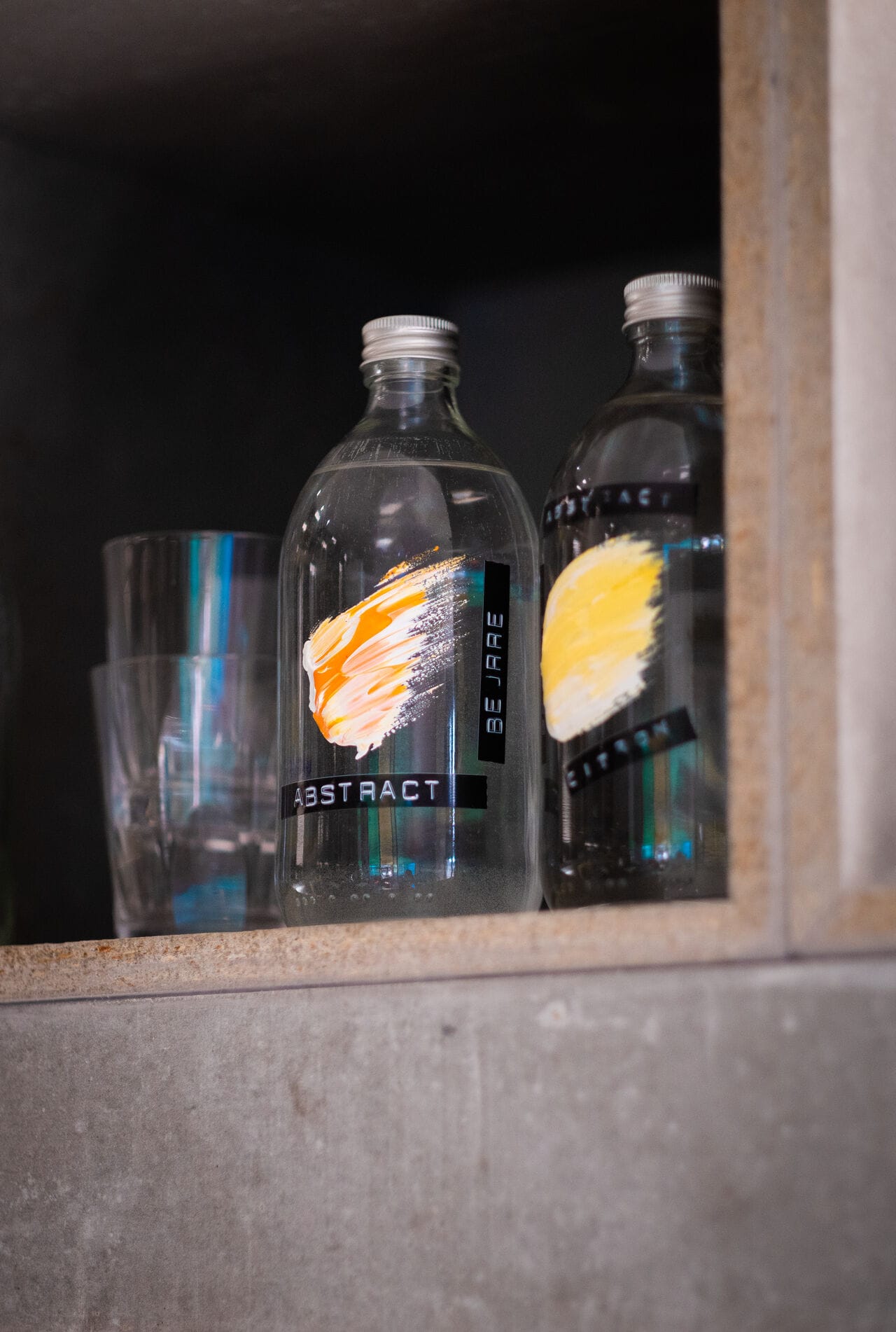
Can you still serve off-menu classics?
Yes, and we aim to develop a sort of “Bible” where we re-imagine all the great classics the Abstract way, using Monochromes. Right now, off-menu, we can whip up a Clover Club or a Daiquiri. We also reinterpret the Kir using a yellow bell-pepper distillate, white Martini re-infused with pineapple, and Chardonnay—part of an experiment matching ingredients of the same color (ed. note: a theory seen in cuisine, e.g., with Alain Passard).
The Daiquiri uses Monochrome Lime with a dash of Monochrome Vanilla and a quick lime syrup. The Clover Club pairs Monochrome Raspberry with Jura vin jaune. It’s delicious, and we pour tons of them every shift.
How often do you change the menu? Any signature drinks yet?
We’re working on the first menu change. So far it’s been stable—a few minor tweaks, but the eight drinks we have now are basically untouchable. I couldn’t choose one to drop; some guests come only for a specific cocktail.
If I had to name one iconic drink, it would be the Mauresque because it perfectly sums up our concept: taking a so-so drink and making it genuinely exciting. We even played with the glassware.
But the Pastry Martini is also striking, with its butter distillate.
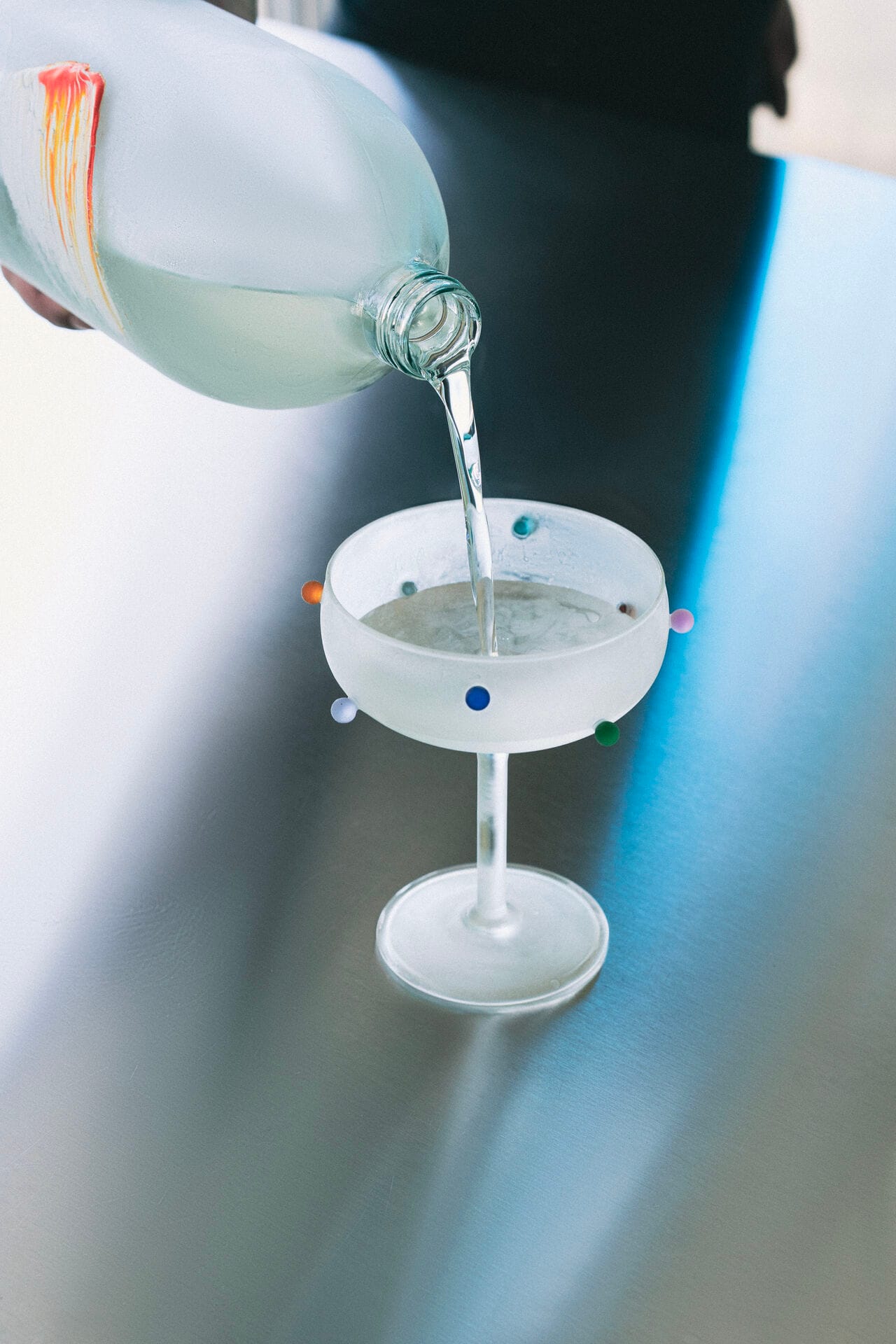
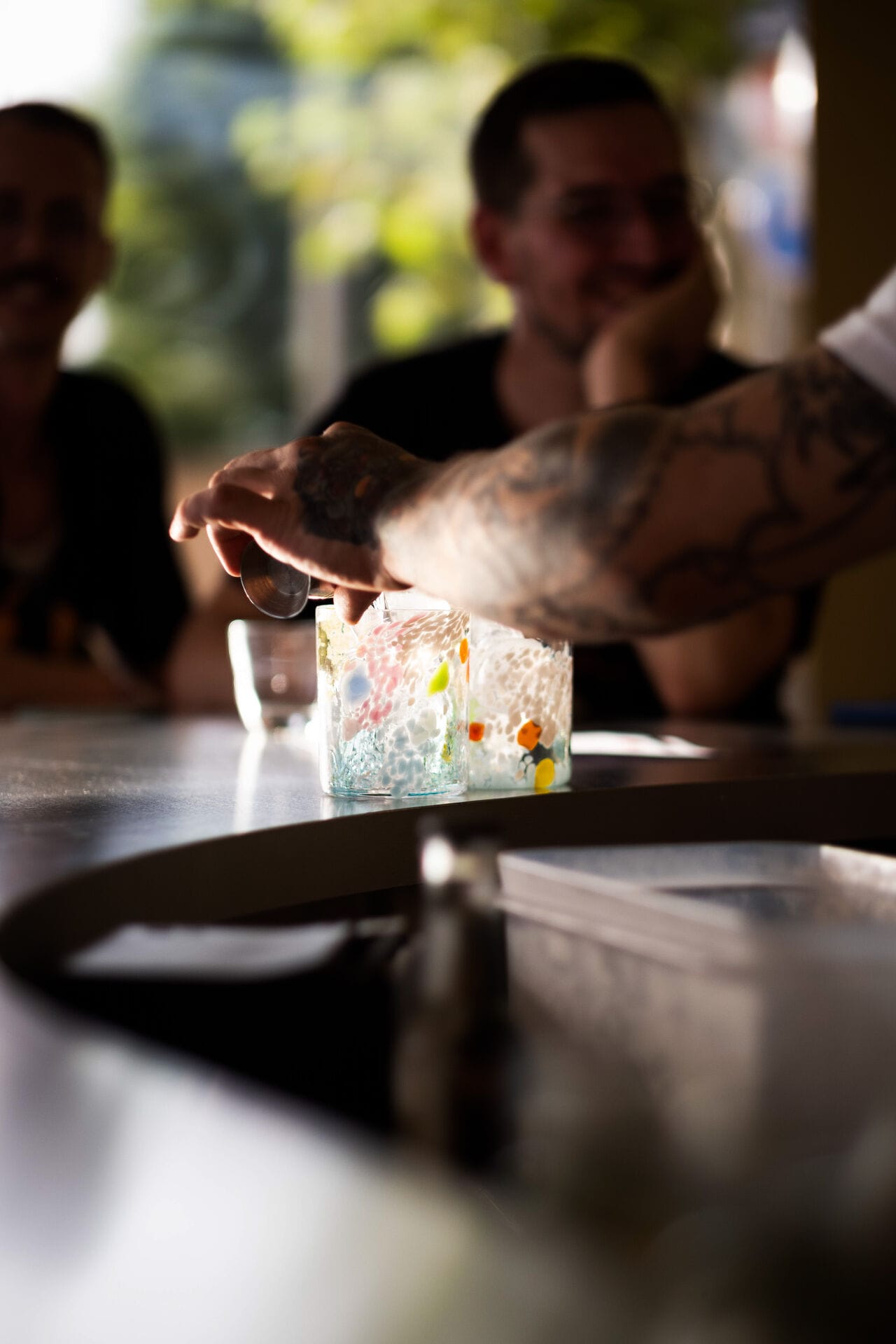
📷 Florian Chastre & Audrey Carpentras
Could any of these cocktails be served on tap?
At one point the Raspberry Tonic and Galopin Picon were on tap. We haven’t put it back on yet, but there’s nothing stopping us. The Galopin Picon was especially fun on tap. We take Picon, macerate passion fruit in it, then filter and centrifuge. We created it because, in the spirit of old bistros, we needed an entry-level option (ed. note: €3.50) so everyone can come in, enjoy the setting, and have an experience.
That offer also helps people who might hesitate to walk into a cocktail bar take the first step.
Is producing a Monochrome profitable?
Yes, it does pay off. We started a year and a half ago, and it’ll take time—the lab was a big investment. It’s less profitable than a classic distillery with a big still because there’s more manual work and smaller batches, but that’s a trade-off we’re happy to accept.
A rotovap turns the usual distilling logic on its head. In classic distillation, ingredients adapt to the technique. With the rotavap, the technique adapts to the ingredient.
That’s why we make single-ingredient products. It makes the most sense with rotavaps: don’t blend ingredients; treat each separately and create a unique process for each. You can’t handle raspberry the same way as butter or mint. We adapt to what each ingredient needs to express its full aroma.
Two things matter: taste and profitability. We once distilled brioche, but it soaked up too much liquid—huge losses. With the heavy taxes on alcohol used, we have to control losses to stay profitable—or at least keep prices reasonable for industry clients. We manage today thanks to tight cost control.
Time is also a factor. We can split the early-stage work with Hadrien and Sara Moudoulaud in Paris or with Rémy in London. Events help too. When a client hires us to develop a cocktail, we always try to include Monochromes. The development period lets us research new ingredients.
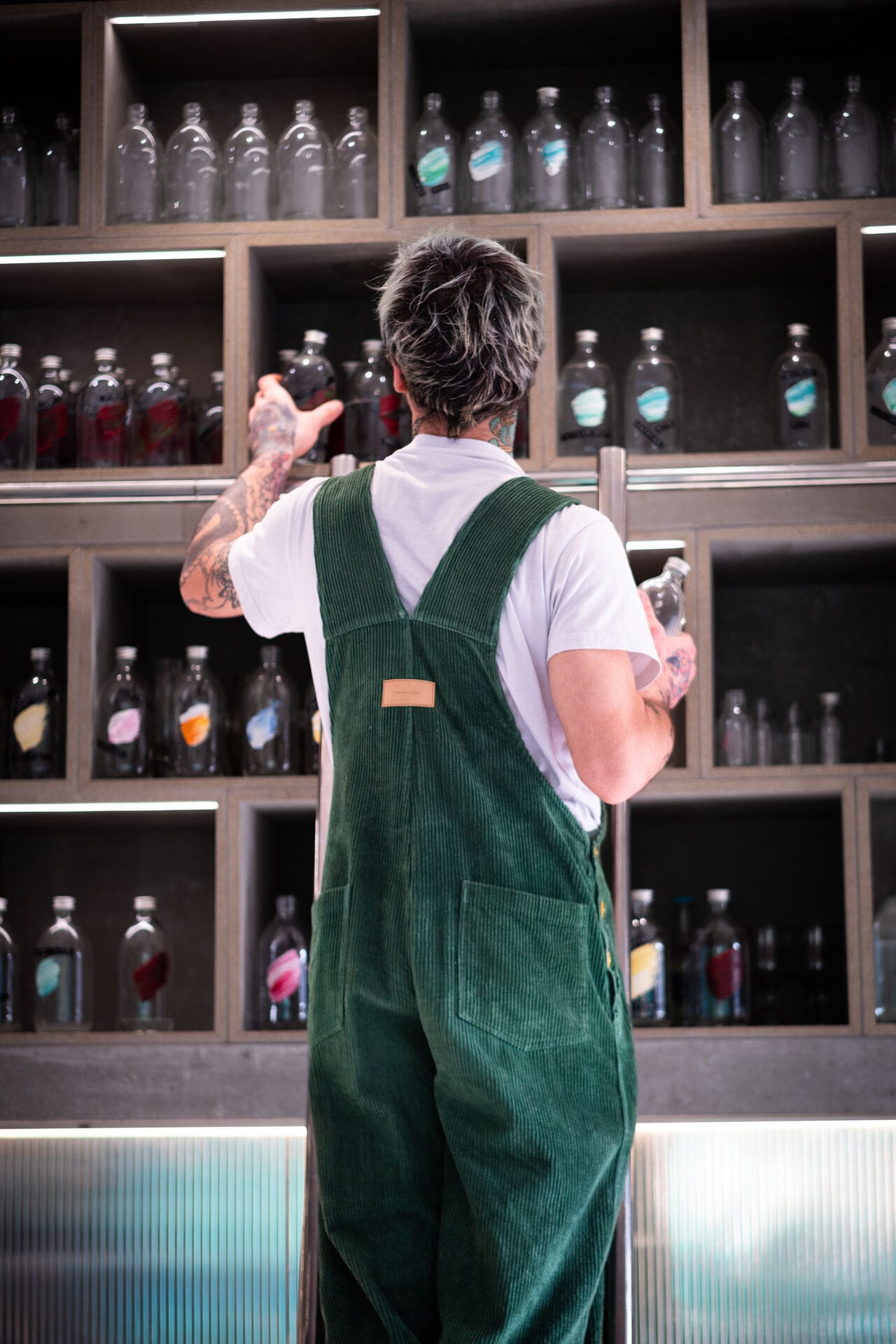
It surely depends on the ingredient, but what’s the average R&D time for a Monochrome?
It depends, of course, and our learning curve keeps getting steeper. We’re constantly adding to our database—Rémy already had vacuum-distillation expertise, which helped us nail some products like Raspberry quickly. Others can take weeks or months. The team may even pause a project if we can’t find the exact technique for a result that meets our standards or stays stable over time. Capturing aromas is one thing; making them last is another.
Do aromas fade easily over time?
Yes. Mint is a textbook case. The aroma faded hard after just a few weeks, even unopened. Sometimes the alcohol is subtle at first, then emerges later—the ingredient impression fades—or sometimes the aroma just nosedives.
That happened with Butter. For a while we couldn’t stabilize it. Now we have, but it took at least four or five months of unsatisfactory trials.
So we built our own tracking and measurement tools to capture every parameter and learn from everything we do. Every mistake and failed test teaches us something for next time.
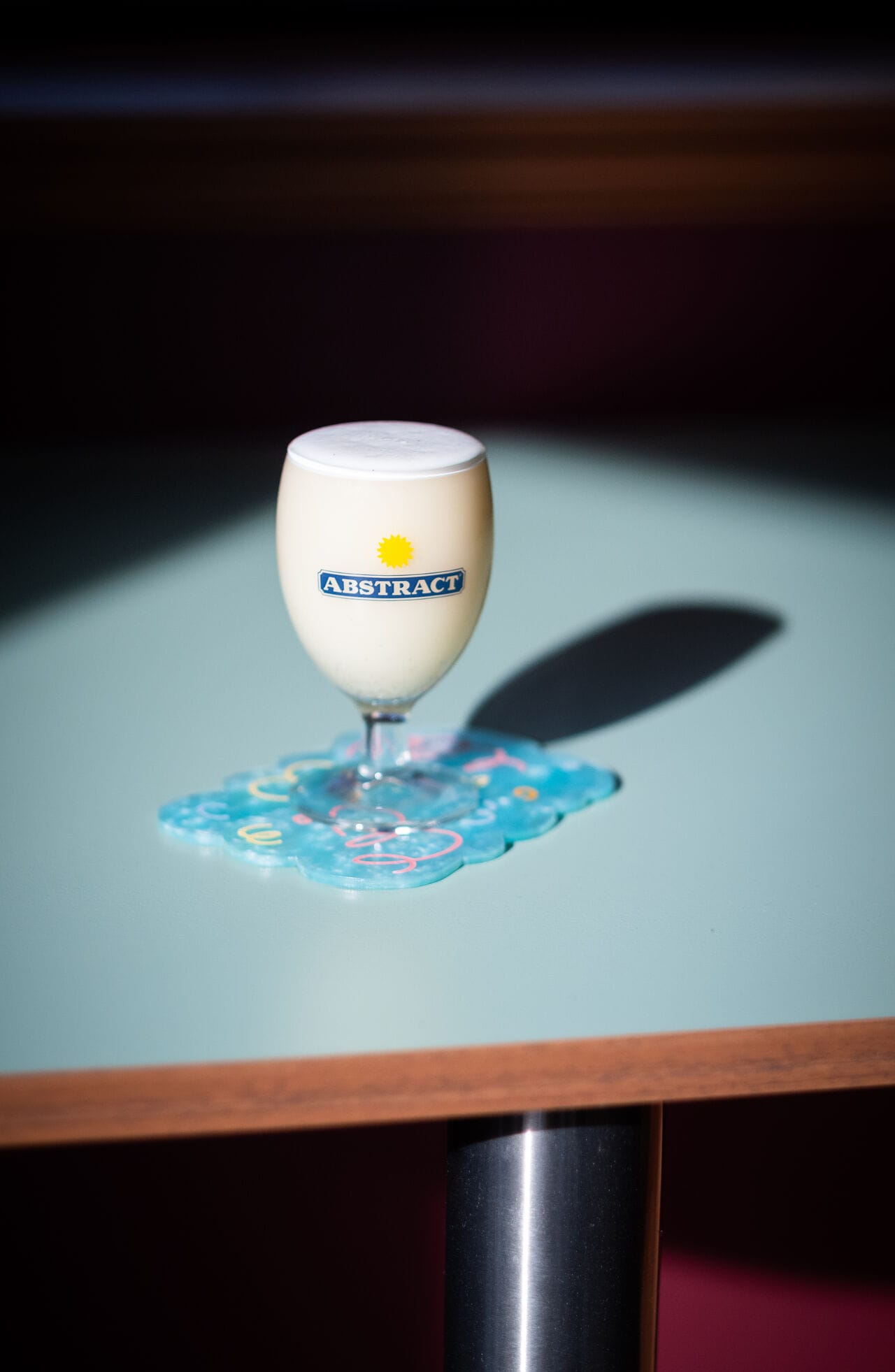
How did your background lead you to open Abstract?
I don’t come from the bar or mixology world. I grew up in a tiny village near Tignes and Val-d’Isère where cows outnumber people. I studied in Lyon, then spent about ten years in Paris as a strategic planner working on alcohol brands for big groups.
I did product-development consulting: brand design, experience design, etc. Eventually I got tired of giving good ideas to people locked into their market formulas and scared of anything new. So five years ago I quit to start my own distillery with a different mindset.
That’s how I met Rémy. We found a lot in common—we’re both from Savoie. Originally Abstract—in its idealistic first phase—was meant to be a mountain distillery, self-sufficient in ingredients. We realized that was too ambitious, so we decided to start with a small lab—ultimately bigger than we imagined—and prove the Monochrome vision works and meets a new demand. We figured we’d see where it took us after that. The project changed about fifteen times in two and a half years of development… (laughs)
